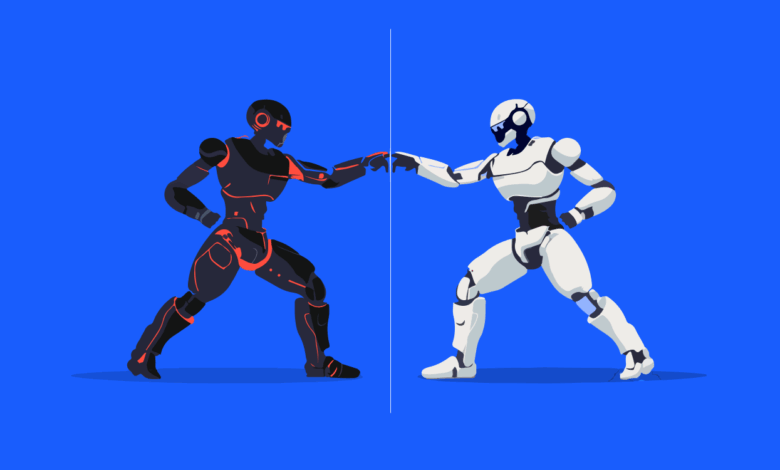
Banking leaders just named AI-generated fraud their biggest headache in 2025 — 37% put it at the top of their worry list. You’d think with all the AI security chatter happening in developer communities on Reddit, we’d have this figured out.
But here’s what’s getting missed: mobile apps where people’s money sits completely exposed. Look at the 2023 MOVEit breach: While not caused by AI, it showed how fast a software vulnerability can spiral. Over 600 organizations, including banks, insurers, and healthcare providers, were compromised in a matter of days. Now imagine similar exploitation cycles, but accelerated by AI.
My co-founder, Subho, has been sounding the alarm that banks are losing the defense race against AI. He’s not wrong. The only way to fight back is with AI-powered security that can actually keep up with these attacks in real time. And this problem isn’t staying in banking: It’s spreading everywhere.
Here’s the thing: AI has broken cybersecurity in ways that our old-school defenses just can’t handle. Attackers now adapt in real time with every failed attempt, execute breaches in seconds instead of hours and plan entire attacks without human involvement. Meanwhile, most security teams are still relying on static rules and manual processes that were built for a slower, more predictable threat landscape.
But organizations that fight AI with AI, using the same adaptive, real-time technology for defense, are already seeing dramatic improvements in speed and effectiveness.
3 core ways AI is a threat to traditional cybersecurity
McKinsey reported that there’s been a 1,200% rise in phishing attacks since generative AI (genAI) gained prevalence in 2022. But the dramatic uptick in attacks isn’t the only problem. AI has fundamentally changed how attacks work, breaking cybersecurity in three specific ways:
1. Real-time adaptation. AI-powered attacks learn from every failed attempt. Miss once? The attack adjusts and tries a different approach immediately. Your static firewall rules and signature-based detection can’t keep up with something that’s constantly evolving. Take WormGPT, which generates new phishing variants every time one gets blocked, making traditional spam filters obsolete.
2. Machine-speed execution. What used to take hours or days now happens in seconds. Attacks unfold faster than most detection tools can even register them. By the time your security team gets an alert, the damage is already done. The 2021 Microsoft Exchange vulnerabilities were exploited within hours of disclosure, giving security teams almost no time to patch before attackers moved in.
3. Autonomous planning. This is the big one. Threat actors don’t need humans to plan and execute breaches anymore. AI can independently scout targets, identify vulnerabilities, and launch coordinated attacks without any human oversight. The entire attack lifecycle is now automated.
But here’s where it gets even trickier. Even when organizations try to fight AI with AI, they face challenges most security teams aren’t prepared for. Model transparency and audit limitations mean you often can’t explain why your AI flagged something as malicious — try explaining that to regulators. Securing third-party AI services creates new attack vectors, and the rapidly evolving attack surface means your security posture has to adapt as quickly as the threats do.
Even AI tools built for developers can unintentionally increase risk: A 2022 study by NYU researchers found that 40% of GitHub Copilot’s code suggestions had potential security flaws. The line between innovation and exposure is thinner than ever.
This might sound overwhelming, but here’s the thing: The same technology that’s making attacks more dangerous is also the key to stopping them.
Don’t fret. You can fight back
The rise of AI-generated fraud means organizations need to match the sophistication of today’s attackers, not fight yesterday’s battles. And if you’re on mobile, that means taking a mobile-first approach to understanding where your gaps are.
Here’s the good news: AI-powered security can outpace attackers. You’re using the same technology they are, which means you can be just as nimble. IBM’s 2024 Cost of Data Breach Report found that organizations using AI for automated security saved $2.22 million per breach on average. This is glaring proof that fighting AI with AI actually works.
When you integrate AI into your mobile security tools, you can stay ahead of emerging threats instead of constantly playing catch-up. Here are three ways to make it work:
- Deploy domain-specific AI models. Focus on AI that can spot vulnerabilities before they become problems, especially in high-risk sectors like financial services and telecom. Combine static and dynamic analysis to catch suspicious code, but don’t stop there — runtime behavior monitoring is where you’ll catch a lot of actual attacks happening. Microsoft’s AI systems now scan millions of lines of code daily, catching vulnerabilities that would take human reviewers months to find.
- Build AI-based feedback loops. Let your models learn from real-world incidents and actual user behavior patterns. The more data you feed these systems from your own environment, the better they get at predicting what’s coming next.
- Integrate into your CI/CD pipeline. Make threat detection continuous rather than periodic. This cuts off AI-driven attackers before they establish a foothold and dramatically reduces the time it takes to fix issues when you find them.
The AI arms race in cybersecurity has already begun. Are you ready?
Organizations are already fighting AI with AI, and it’s working. Real-time threat modeling engines that learn from live attack data are helping teams build defenses that predict attacks instead of just reacting to them.
The speed of cybersecurity has fundamentally changed. AI agents now operate on both sides of this battle.
Attackers have agile, fast and autonomous AI that is completely rewriting how cybercrime works. But defenders can deploy AI that’s predictive, adaptive and intelligent enough to stop threats before they happen. We’re talking about anomaly detection, automated threat triage, zero-day pattern recognition and proactive threat modeling.
The bottom line? Your organization needs AI-powered defense capabilities now. AI-powered platforms reduce incident response time by up to 74%, giving defenders a critical advantage. AI has leveled the playing field in cybersecurity. Now is the time for you and your organization to use this moment to build stronger, more adaptive defenses than ever before.





